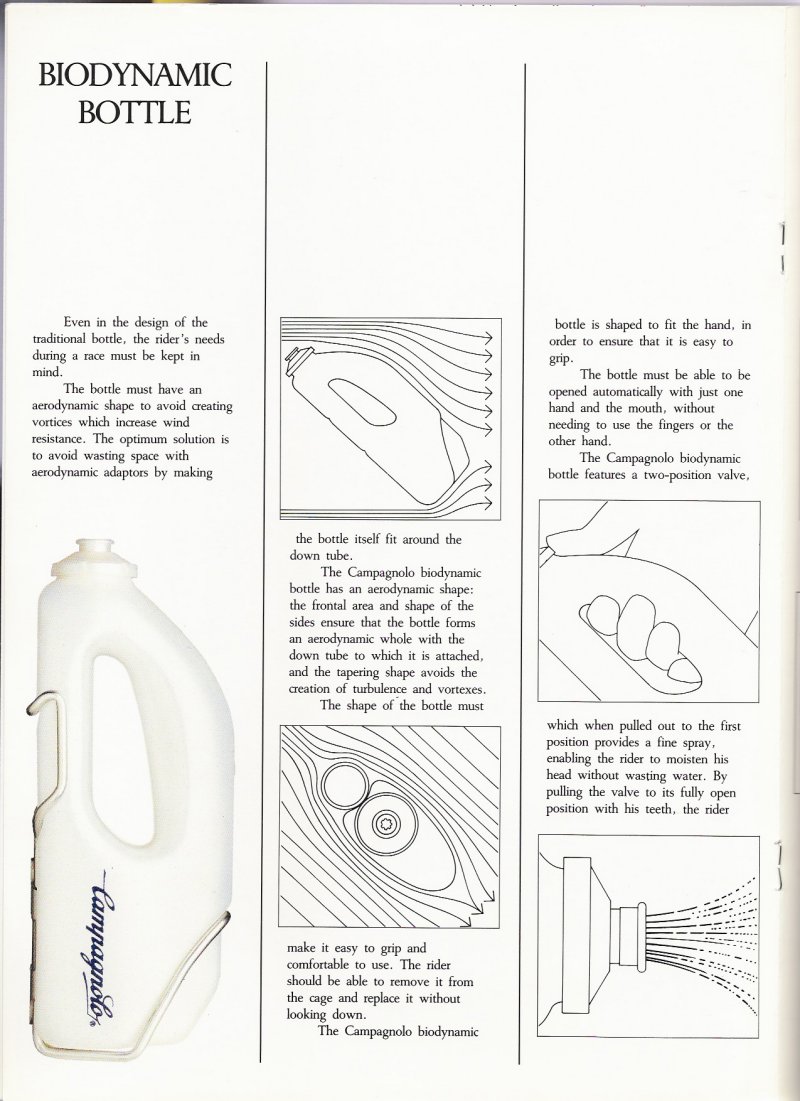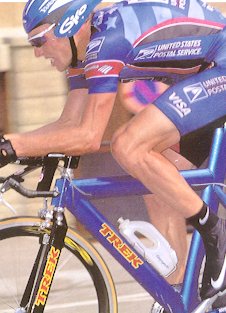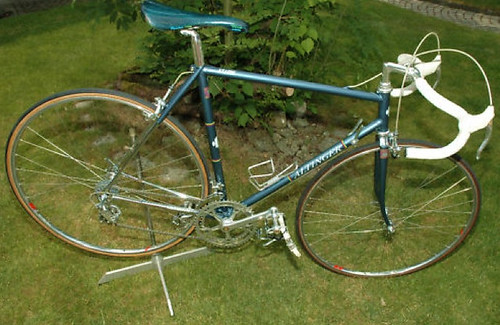Even as most other component makers were rushing to introduce "aero" gruppos during the wind tunnel fever days of the 1980s, Campagnolo stuck by their guns and made components that often hinted at, but didn't embrace, aerodynamics. One notable exception to this remarkable restraint, however, was the Biodynamic bottle.
Campagnolo's 1987 catalog, in fact, showed two bottles based on the same concept: "The bottle must have an aerodynamic shape to avoid creating vortices that increase wind resistance." Or, at least, they had to look aero ...
The Biodynamic bottle, and its brother, the insulated "Biothermal," used a flat design and a bottle-specific cage to create less wind resistance. The Biodynamic bottle also included an integral handle to make it easier to grab.
While the Biodynamic bottle was a great idea in theory, it never caught on. In practice, the bottle was hard to use, and the cage of course limited the rider to using Campagnolo's bottles (not a great option if you somehow lost your bottle during a ride). Despite their aerodynamic disadvantages, round bottles and standard cages still rule the peloton today, although Lance Armstrong famously used a Biodynamic bottle in a time trial during the 1999 Tour de France:
Bonus Retro Info: In addition to the Biodynamic and Biothermic bottles, Campagnolo also introduced an MTB version. This last type is exceedingly rare--if you see one for sale, buy it. It's a true collector's item.










